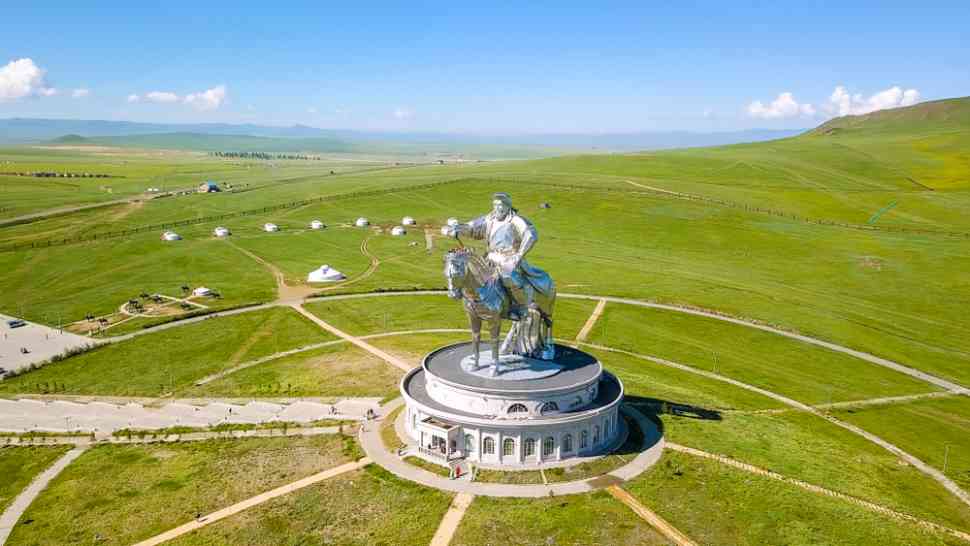Genki’s Khan And The Mongol Empire

Everybody has heard the story of Genkis Khan. It is a relatively modern example of Imperial colonialism, starting from a man of humble origin and ending up being one of the most influential leaders of the then-known world. Starting from the vast expanse of the Asian steppe, the Empire extended from East Asia and the Pacific to the outskirts of the Danube and the Persian Gulf. In total, this area is accounted for 23 million square kilometers. The Mongol Empire lasted almost four centuries, from 1206 to 1638, and has a fascinating story that we will discuss today.
The rise of Genki’s Khan
Around the 12th century A.C., the steppe of Asia used to be a residence for the Mongolian (and some Turkic) tribes. Living conditions were frugal. The season-by-season movements of the nomadic tribes were inevitable. People cultivated seeds wherever they found fertile land and farmed animals. The main tribes in that period were the Tatars, the Mergids, the Kerets, the Maiman, and the Hamag Mongols. Quarrels between them were not a rare occurrence. The emperors of the Jin Dynasty strengthened in every way the strife of the tribes believing that this would prevent them from turning against the Empire.
The famous Mongol Empire begins with the rise of Genkis Khan to power. The year 1206 is dated as the beginning of the Empire. Temujin (later renamed Genkis Khan), after fighting with Wang Khan, kills him and recruits capable warriors from Allied Tribes while killing the Chiefs of each enemy tribe. The reason he does not recruit family members, as is customary, constitutes a strategic advantage to avoid attack by his own allies, and this is why I promised this would be an exciting story.
After exterminating most of the tribes, the new leader leads the troops to the borders of China. From 1205 to 1218, Beijing, the Yellow River regions, and almost all of Central Asia joined the Mongol Empire. Then he moves West, conquering Uzbekistan, Kazakhstan, and Ukraine. Shortly before his death, Genkis Khan had accomplished something inconceivable for the facts of the time. He had created a whole that consisted of different cultures, religions, customs, traditions, and languages. Overall a million people are under his authority. Finally, he died on 18 August 1227.
The Mongol Empire in its heyday
At this point, some namedropping has to take place in order to understand what happened. After the death of Genkis Khan, the Mongol Empire did not stagnate. The leadership, under normal circumstances, passes to Genkis Khan’s eldest son, Joji. He, however, passed away six months before his father, as did the next in line, Sagatai. Eventually, Ogendei, the third son of Jenkins Khan, is appointed as the new leader. His first military actions take place in Manchuria, where he arranges for the re-establishment of the Mongols in the region and the downing of the eastern Zia regime.
Russia and other independent kingdoms, such as the Empire of the Bulgarians, are conquered within a year. Mongolian forces reach even the Baltic coast with only the hindrance of the heavy Russian winter. Starting their journey for the German lands, they meet the staunch resistance of the soldiers of Duke Henry II of Silesia-Wroclaw, and, despite their dynamic victory, they decide not to break in towards central Germany. So they are moving towards Hungary, which they are conquering.
On the other side of the globe, Ogendei personally leads an army against the Jin Dynasty. The operations of conquest would have continued, and the Mongol Empire might have spread throughout the world had it not been for the sudden death of Ogendei in 1231. The power is taken by his widow, Toregene, whom her son, a natural continuer of the dynasty, replaces.
Fall of the dynasty
The crisis that is beginning to erode the Mongol Empire is taking place in China. Revolutionaries claim privileges such as lower taxes and fewer unhealthy duties. The most famous Revolutionary, the Monk Zhu Chongba, led the campaign to expel the Mongols from Beijing in 1368. Later, he becomes the leader of the new dynasty, the Ming Dynasty. Thus, by 1687, the Chronicle of one of the greatest empires ever created gradually expired. Interestingly, China was the only country that managed to stop this strong Empire, and according to historians, that was due to the unity of the Chinese people.
Have you read?
Blocks to Effective Workplace Dialogue: Prioritizing Process Over Content by Dr. Roxy Manning.
Lessons to Carry Forward from Commencement by Robin Landa.
Innovative Approaches to Finance Management: Lessons from the Software Industry by Ankita Panwar.
Executive Pay: Top 8 Highest-Paid Hotel CEOs.
5 Key Stress Management Tips Every Leader and CEO Should be Using by Kristel Bauer.
Add CEOWORLD magazine to your Google News feed.
Follow CEOWORLD magazine headlines on: Google News, LinkedIn, Twitter, and Facebook.
This report/news/ranking/statistics has been prepared only for general guidance on matters of interest and does not constitute professional advice. You should not act upon the information contained in this publication without obtaining specific professional advice. No representation or warranty (express or implied) is given as to the accuracy or completeness of the information contained in this publication, and, to the extent permitted by law, CEOWORLD magazine does not accept or assume any liability, responsibility or duty of care for any consequences of you or anyone else acting, or refraining to act, in reliance on the information contained in this publication or for any decision based on it.
Copyright 2024 The CEOWORLD magazine. All rights reserved. This material (and any extract from it) must not be copied, redistributed or placed on any website, without CEOWORLD magazine' prior written consent. For media queries, please contact: info@ceoworld.biz
SUBSCRIBE NEWSLETTER








